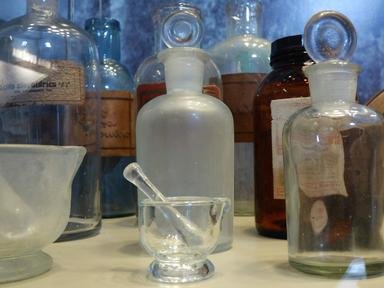
Essential Elements Trivia Quiz
The Periodic Table of the Elements classifies the different elements of our world in a number of different ways. What do you remember from your high school chemistry class?
A classification quiz
by reedy.
Estimated time: 3 mins.
- Home
- »
- Quizzes
- »
- Science Trivia
- »
- Chemistry
- »
- Mixed Elements